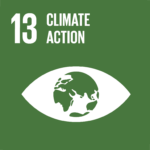The Philippines ranked highest with an index of 46.86, while Indonesia ranked second with an index of 43.50 in the global natural disaster vulnerability index globally, known as the WorldRiskIndex.
The Philippines and Indonesia have been identified as the countries most vulnerable to natural disasters worldwide in 2023, occupying the first and second spots respectively on the global natural disaster index.
RELEVANT SUSTAINABLE GOALS




When Disaster Strikes: gauge the effectiveness of Disaster Risk Reduction & Humanitarian Action
The WorldRiskIndex’s 2023 annual report places the Philippines at the top with an index score of 46.86, closely followed by Indonesia with a score of 43.50. This ranking underscores the high frequency of natural disasters both nations experience annually, including volcanic eruptions, typhoons, floods, and tsunamis.
The WorldRiskIndex integrates a variety of discussions and theories on the dynamics of hazard, exposure, and vulnerability. It posits that the interaction among these factors is the principal contributor to disaster risks
The Complex Interplay Of Risk : The Importance of Intersectionality in Disaster Studies
The interaction between exposure and vulnerability has long been recognized as a key determinant of risk, highlighting how different people can experience the same hazardous event in diverse ways. Although vulnerability is a complex and often debated concept, policymakers and planners typically identify the most vulnerable groups as the very old, the very young, those with physical disabilities, and frequently, women.
There’s an urgent need to delve into how and why certain individuals and groups face inequities before, during, and after disasters. Addressing these inequities demands collaborative efforts aimed at intentional and systemic change. Employing intersectional approaches enhances our ability to analyze and challenge discriminatory practices that disproportionately affect marginalized communities during disasters.
Intersectionality urges us to understand the interplay of privilege, power, and oppression and how these dynamics produce varied socioeconomic impacts based on individuals’ identities (such as age, race, sexuality, and gender) and conditions (like housing status, immigration status, and marital status). Exploring the inter- and multidisciplinary fields of disaster studies reveals the comprehensive benefits of adopting an intersectional lens. This approach not only spotlights historical discrimination and the roots of vulnerability but also underscores the systemic patterns that place some individuals at risk while safeguarding others.
Moreover, intersectionality provides valuable insights into personal capacities that influence one’s ability to prepare for, respond to, and recover from disasters, aiding in the mitigation of risks. Despite its potential, intersectional methods are often underemployed or superficially implemented in disaster studies. The challenges of simplistic representations, disproportionate focus on certain intersections, and the predominance of Western perspectives need addressing to effectively counteract the systemic privilege, power, and oppression that lead to unequal disaster experiences and outcomes.
You may also be interested in :
El Niño’s Impact On Global Summer Climate : A Historical Perspective



